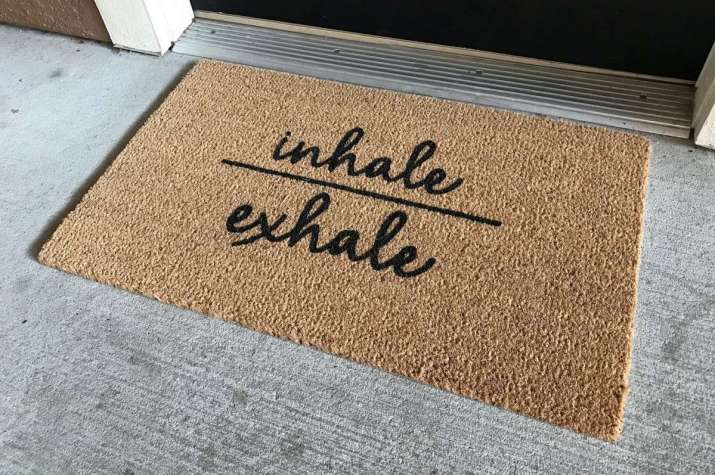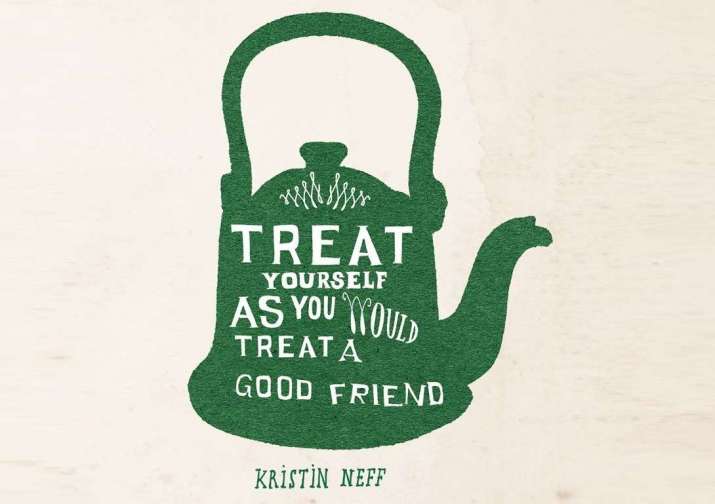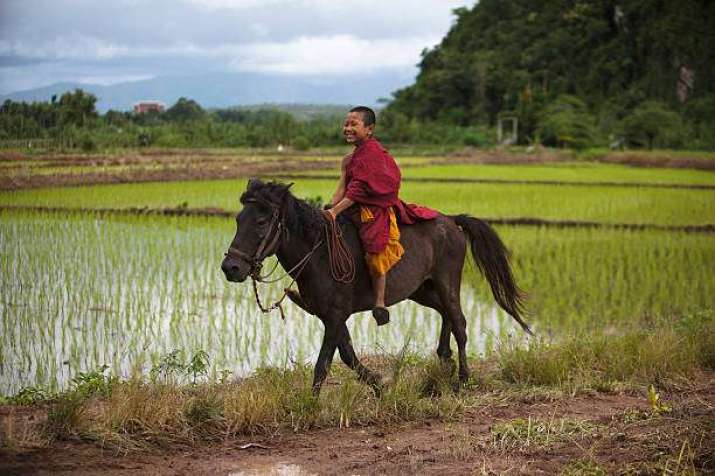
One of the most memorable conversations I’ve had in my eight years of combining meditation practice with location-independence—what I like to call lily padding—was with a woman who led interfaith retreats.
She told me the most amazing story about working with a group of religious leaders from the major faiths. They all arrived at the retreat behaving as if they were far too busy and too important to be there, so she decided to unexpectedly turn the tables on them: rather than withdrawing from the everyday world as scheduled, she led them right back into it by visiting every house of worship they represented to see what sort of welcome they would receive as complete newcomers. A spiritual mystery shop of sorts. At the end of the day, she led them to a betting shop. All of them took exception to entering it, but she stood her ground, promising them it was their last visit of the day.
Over dinner, she invited everyone to compare and contrast how warm each welcome had been. Reluctantly, they all had to admit that the betting shop was the winner. She then gently asked them, “Is it any wonder, then, that someone suffering might choose gambling over God?”
In last month’s article for this Lily Pad Sutra column, I described how I found myself coming full circle by managing the very course that had introduced me to Vipassana meditation seven years earlier. Observing the process from the outside, it seemed to me that many beginners were confusing self-observation with self-judgement, which led the Dharma to “convert” my own Vipassana practice to solely generating metta.
During my many years jumping from lily pad to lily pad, I have often joined local meditation circles. Much like houses of faith, some were more welcoming than others. Two weeks after my “metta-morphosis,” I found myself returning to my favorite, held in a local community centre in Oxfordshire.
I arrived early, and sat down next to a woman I had never met before. She was clearly feeling very anxious, and I asked whether she was new. She answered that it was only her second visit, and proceeded to share the terrifying list of challenges she was facing in her life that had led her to try meditation. I listened, reassured her that she had found a lovely group, and wished her well on her journey learning to meditate.
Unbeknown to either of us, a Buddhist monk from a nearby monastery had been invited to lead that evening’s sit. As he took his seat on a makeshift platform constructed from child-sized play tables from the nursery next door, I admit my first thought was that I hoped he would stay afloat for the whole evening!
The monk led us through some simple anapana breathing exercises, and we settled in for a half-hour of observing our breath. It was the strangest contrast for me, sandwiched between the energetic extremes of the monk’s stillness and my neighbor’s anxiety. Once again, the Dharma nudged me to generate metta for the group rather than observe my breathing.
After the meditation, the monk answered questions about his daily life and practice. His observations were fascinating, and struck me as coming from a very peaceful and compassionate place within. However, my neighbor was getting more and more agitated and finally erupted with a question of her own: “How can you stay so peaceful when there’s so much wrong in the world?”
The monk attempted to answer, but the woman barely listened before bolting from the room. My experience with similar bolters as a course manager on the 10-day Vipassana silent retreat had me out of my chair and out into the foyer to ensure the woman was okay.
I found her pacing furiously, crying, and trying to find her car keys in her handbag. I approached her as gently as I would an injured wild animal, and asked her if she would do me the favor of having a cup of tea with me before heading out as otherwise I would worry about her driving when she was so upset. My request caught her so offguard that she agreed.
Together we found the kitchen and, as I rummaged through unfamiliar cupboards for mugs and teabags, she spewed out her anger at the monk. I listened in silent surprise: what had sounded to me like the compassionate wisdom cultivated over many years of meditation practice was to her clearly like a red rag to a bull.
As I filled the kettle with water to boil, I checked in with the Dharma—what it would have me do now? I was filled with the same hot-hot sensation I described last month to simply generate metta and just see what happened. The agitated lady continued to rant, and it dawned on me that what I was really hearing wasn’t fury at the monk but her own fear over a recent medical diagnosis.

When she’d exhausted herself, I took the risk of sharing that a medical crisis had led me to sit my first Vipassana course and how moved I’d felt by the monk’s compassion. It inspired me that there were meditators out there capable of maintaining absolute peace, irrespective of the chaos in the world. She bristled somewhat, and I told her what I’d told some of the students that had bolted from the Vipassana course I’d managed: forget comparing your insides to someone else’s outsides, trying to run before you can walk. Comparing her progress to the monk’s was like comparing her second jog ever to one of Usain Bolt’s record-breaking sprints.
That image made her laugh, and finally draw an actual breath.
I then noticed that her handbag was nearly bursting with books, and I asked her what she was reading. She pulled out some hefty Buddhist tomes that a friend had lent her, and it was my turn to laugh. I told her that I, too, had attempted to read them over the years, but reckoned that even the Dalai Lama had struggled with certain passages. Would she perhaps consider a suggestion from me instead?
We found a scrap of paper, and I wrote down a single title for her: Self-Compassion by Kristin Neff.
I told her about meeting Kristin at a conference I had volunteered at in 2013 called Empathy and Compassion in Society (coincidentally where I also met the senior writer of Buddhistdoor Global), and how genuine Kristin had struck me as being, both as person and as a teacher. A long list of personal challenges had also led her to explore Buddhism.
Until this whispered conversation in community centre kitchen, I hadn’t connected the dots of why my own “metta-morphosis,” a fortnight earlier, had felt so right . . . perhaps some of us are more in need of compassion as a welcome into meditation practice than solely observation?
When we finished our tea, we hugged and she promised to watch Kristin’s inspiring TED Talk to see if it might speak to her more than that evening’s visiting monk, or the weighty scholarly texts she carried.
I rejoined the group for the closing meditation, relieved to see that the monk had indeed stayed afloat on his makeshift dias. As we tidied the room, the group’s leader thanked me for seeing to the distressed visitor, and asked me what had happened outside. As I wouldn’t be there the following week, I gave a brief description of our conversation and they were stunned that their dear friend the monk could make that impression on anyone.
I told them about my book suggestion, and they confessed that they had never had heard of Kristin Neff or Self-Compassion. One glance at the group’s rather advanced lending library had us both grinning—perhaps it was also worth ordering a copy for the group?
Fast forward half a year from that evening, and guess where the Dharma is currently employing me? Taking bets at horse races. Yes, really!
Want an insider tip? Self-compassion is always a winner.













